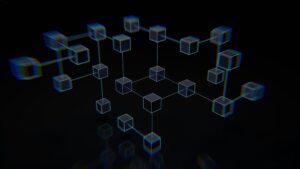Web3 | The Blockchain-Powered Future of the Internet
The term “Web3” refers to the proposed future evolution of the internet, envisioned as a decentralized and user-controlled platform built upon blockchain technology.
Web3 aims to create a more open, transparent, and democratized online ecosystem, unlike the current web infrastructure which centralized entities largely control.
In this new paradigm, users would have greater control over their data and digital identities, facilitated by the underlying blockchain technology’s inherent characteristics of transparency, immutability, and trustless consensus mechanisms.
Web3 proponents envision a future where developers build applications and services on decentralized protocols, enabling a more equitable distribution of power and value among participants, rather than a few dominant platforms concentrating control and profits.

How Web3 Works Different from Web2:
- Firstly, the fundamental distinction between Web3 and Web2 lies in the distribution of control and approach to establishing trust.
- In the current Web2 paradigm, control is centralized within tech corporations acting as intermediaries and gatekeepers.
- In contrast, Web3 aims to decentralize control and empower users with direct ownership of their information, without intermediaries.
- Additionally, Web2 transactions rely on mutual trust between parties, facilitated by central authorities.
- On the other hand, Web3 eliminates the need for interpersonal trust by leveraging blockchain’s inherent characteristics of transparency, immutability and consensus mechanisms.
- Moreover, on Web3 platforms, the network itself validates and approves transactions based on predetermined rules, not the trustworthiness of individual parties.
- Example: Purchasing concert tickets on a Web3 ticketing platform
- Each ticket has a unique, verifiable identity tied to its owner
- Before purchase, network nodes validate seller credentials and ticket authenticity
- Allows buyer to confidently acquire ticket without blind trust in seller
- This shift in control and trust mechanisms distinguishes Web3, offering:
- A more transparent, secure and equitable online ecosystem
- Governed by decentralized protocols and consensus, not centralized authorities

key technologies that underpin and enable the vision of Web3:
1. Blockchain –
This distributed, decentralized ledger technology provides the backbone for Web3, allowing for secure, transparent and tamper-proof recording of transactions and data without a central authority.
2. Smart Contracts
These self-executing contracts written in code and deployed on the blockchain facilitate automated execution of agreements and transactions based on predefined conditions, reducing the need for intermediaries.
3. Digital Assets and Tokens –
Web3 introduces a new class of digital assets and tokens that can represent virtually anything of value, including cryptocurrencies, NFTs, and tokenized real-world assets.
conclusion
- These digital assets and tokens can be traded, transferred, and managed securely on blockchain networks.
- By combining blockchain, smart contracts, and digital assets, Web3 aims to create a more open, trustless, and decentralized internet ecosystem.
- It shifts control away from centralized entities and places it in the hands of users and decentralized networks.
- The potential implications are far-reaching, including:
- Decentralized finance (DeFi)
- New economic models
- Digital identity management
- Decentralized data storage solutions
- However,it faces significant challenges:
- Scalability concerns
- Regulatory uncertainty
- Need for widespread adoption and user-friendly interfaces
- As This technology evolves, it will be crucial to address these challenges while upholding core principles of decentralization, transparency, and user empowerment.
- Ultimately, Web3 represents a bold vision for the internet’s future.
- It promises to redefine how we interact, transact, and exchange value digitally.
- Ushering in a new era of decentralized innovation and user-centric online experiences.
About Cloud Computing……….click here


3 thoughts on “Web3 | The Blockchain-Powered Future of the Internet”